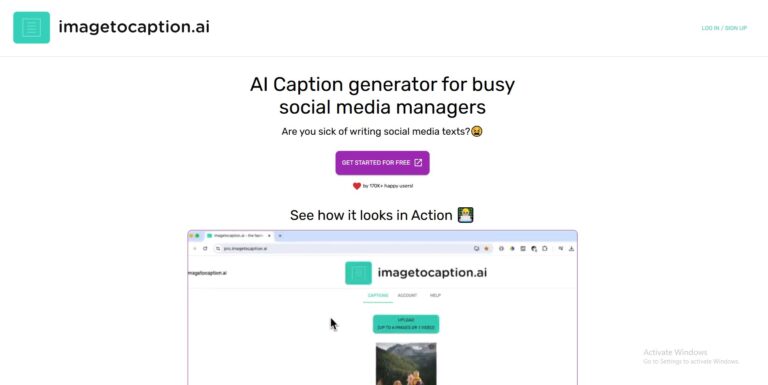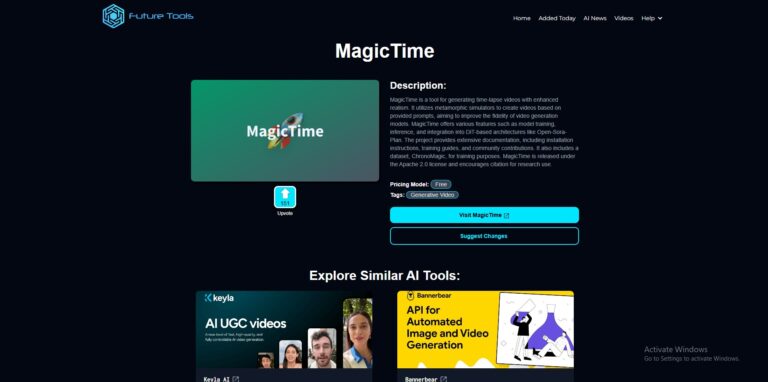Witness the brilliance of turning children’s drawings into animations with an algorithm based on Detectron2 and AlphaPose. Animated Drawings helps kids transform their drawings into lively animated figures, which is truly astounding. It helps children realize their creativity using their animated tools. Animated Drawings enables parents to turn their children’s creativity into fully-interactive and enjoyable animated characters simply by uploading the drawings. Animated Drawings bring together the world of art and technology in a very innovative way. From children’s sketches to animated characters, Animated Drawings help children enhance their creativity with modern technology.
What are Animated Drawings?
A sophisticated new tool, Animated Drawings, uses machine learning technologies to automate the animation of children’s artwork. More specifically, it employs an advanced object detection algorithm, Detectron,2 created by Facebook AI Research and a well-known pose estimation system, AlphaPose. These technologies function together to recognize and interpret the contours, lines, and figures that children create in their drawings to turn them into animated and anthropomorphized characters.
The charm of Animated Drawings is in the animated life of the characters in children’s drawings, without taking away the simplicity that comes with them. Now, based on a child’s imagination, we live in a world where stick figures jump for joy. Superheroes take flight, and Dinosaurs dance as well.
Key Features of Animated Drawings
Along with animated life to stick figures and other characters, kids get to enjoy more with the features offered in Animated Drawings. The features are user friendly and suitable for every age.
Here are some highlights of the software:
1. Automated Animation
Manual tasks are the least of your worries, thanks to the inclusion of AlphaPose and Detectron2 in the system. Every drawing is analyzed automatically through limb detection and AlphaPose.
2. Ease of Use for Uploads
Focus on having fun, not on technical challenges. The only requirement is a clear image or scan of the child’s drawing. The system does the rest in a few easy steps.
3. Optional Contribution to Research
As part of the advancement of technology for artistic development, participants have the opportunity to share their images for inclusion in a public database. This enables researchers to further refine the tools available for aiding creativity in children and to appreciate how children formulate concepts visually.
4. Privacy and Control
No participant is obliged to contribute to the public dataset. Users can withdraw whenever they wish, thus having full control of their content.
Use Cases for Animated Drawings
Animated Drawings have diverse applications that can prove entertaining and inspire families, teachers, and researchers. Here are some common use cases:
1. Entertain and Inspire Children
The joy children experience when they see their artwork transformed into an animation is unparalleled. Animated Drawings help nurture imagination and enhance self-esteem in children since they allow them to realize that their thoughts and ideas are important and can indeed be animated into reality.
2. Create Shareable Moments
The animations can also be used as digital memorabilia, which can be shared through social media or sent personally to friends and family members. It will be delightful for the child’s grandparents, aunts, uncles, and friends to see the animated version of the child’s drawing, thus receiving a priceless digital gift.
3. Educational Tools
Animated Drawings can be a great tool for teachers and educators to facilitate artistic skills in their students. The process of making animations can be used when teaching children about storytelling, art, and even the basics of computer science.
4. Family Keepsakes
Transform children’s artwork into treasured family keepsakes. The animated artworks can be saved as digital keepsakes and later compiled into personalized video montages to reminisce about in the years to come.
5. Contribute to Research
Users who opt in to contribute their data greatly enhance the functionality of AI-based creativity systems. Such research can lead to the development of better tools that help engage and empower children all over the globe.
The Technology Behind the Magic
The innovation of Animated Drawings comes from its integration of computer vision and machine learning. Detectron2 takes charge of identification—locating characters and components present in the image. After this, Alpha Pose undertakes an estimation of the pose and structure of the figures. Their use together allows for motion to be applied to still images.
This powerful collaboration of tools allows even the most basic drawings to be turned into lively animations. Characters such as stick figures can be recognized, and their arms can be animated to wave, run, or even dance. This process adds a new level of animation while still keeping the drawing intact.
How to Get Started with Animated Drawings
Getting started with Animated Drawings is quick and easy:
1. Draw Something: Have your child draw something on paper. Characters with legs and arms lend themselves best for animation.
2. Upload the Image: Use your smartphone or scanner to take a picture and upload it to the Animated Drawings platform.
3. Watch the Magic Happen: The algorithm will bring your drawing to life, and you will be able to watch a preview and save the final product.
4. Choose to Contribute: You can make the drawing public or keep it private.
5. Share and Enjoy: Once downloaded, the animation can easily be shared with family and friends or kept as a personal digital treasure.
Exhibition catalog, Anthony Serrano. Mendoza 2019.
In “Sculpture on the blunt end of imagining, Anthony Serrano strategically combines technology and creativity by altering everyday objects, creating their assembly or by dismantling them. He builds narratives inside caster frames on empty projection screens. The empty frame metaphorically represents a gate that segregates fictional parallel worlds with sculptures existing in unconventional materials such as cast bronze, acetate, molded plastic, timber, hardened polystyrene, faux fur, and other idiosyncratic materials.”





